Our collaborative project with GE that looked at 3D printing this week would only be partially complete without a look at the use of animals as living 3D printers. They are sentient printheads, we might say: biological sources of material, whether it’s silk and honey or, as we’l see below, plastic and even concrete.
Animal Printheads
Spiders, silkworms and honeybees are already 3D printers — in a sense that bioengineering is rapidly making more than just a poetic metaphor. These creatures are organic examples of depositional manufacturing, and they have been domesticated and used, throughout human history, for specific creative ends.
Just this week, for example, we’ve learned that, given a special diet, silkworms can produce coloured silk, readymade for use in textiles, and other examples are not hard to come by. Indeed, using bees as 3D printers is already something of an accepted artistic process.
Perhaps the most famous recent exploration of the animal-as-3D-printer concept was done earlier this year for, of all things, a publicity stunt by Dewar’s, in which the company “3D printed” a bottle of Dewar’s using nothing but specially shaped and cultivated beehives.
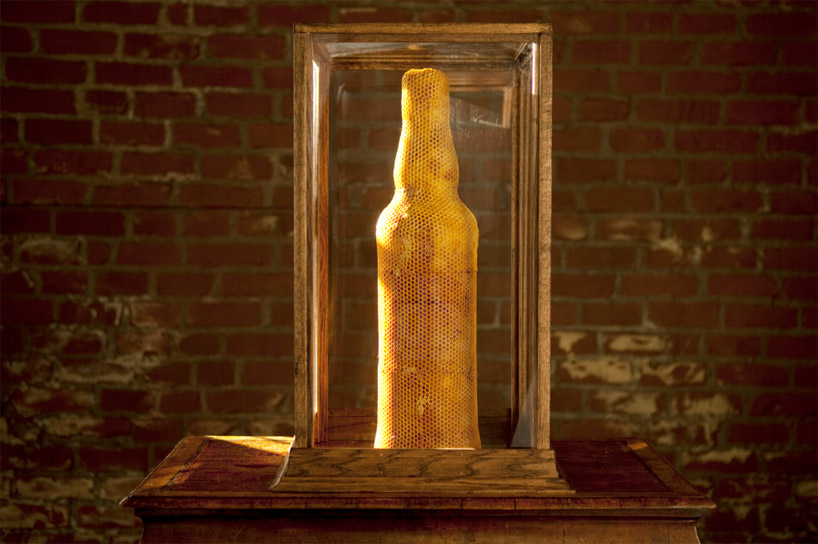
The pictures tell the tale clearly enough: starting with a large glass bottle, used as a mould in which the bees could create new hives, the process ended with the removal of the glass and the revealing of a complete, 3D-printed hive.
As Dewar’s joked, it was 3B-printed.
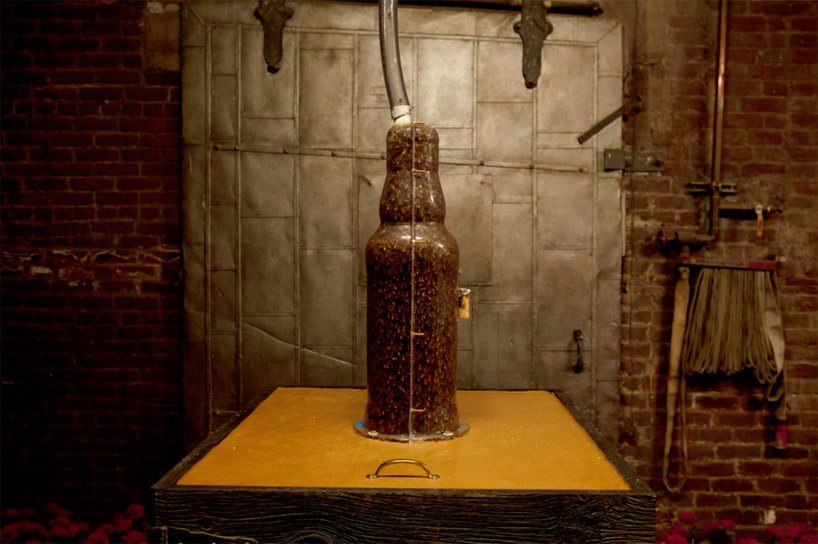
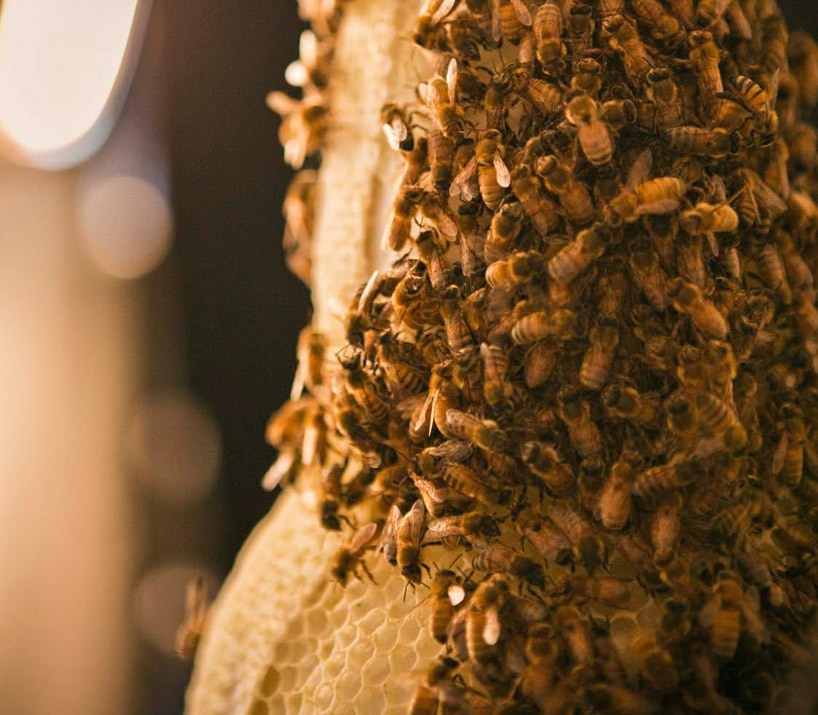


Images courtesy of Dewar’s, via designboom.
Or, for example, take the Silk Pavilion, another recent project you’ve probably seen, in which researchers at MIT, led by Neri Oxman, 3D-printed a room-sized dome using carefully guided silkworms as living printheads.
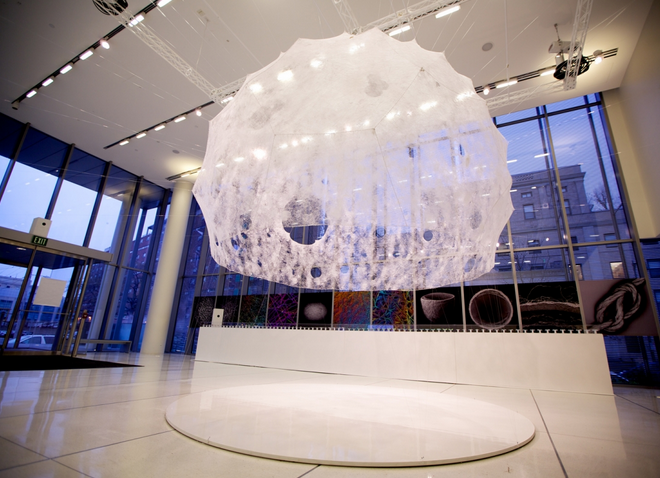
The Silk Pavilion was an architectural experiment in which, the designers explain, “the silkworm itself [was] deployed as a biological printer in the creation of a secondary structure,” the primary structure being a labyrinthine, continuous thread wrapped around a metal scaffold.
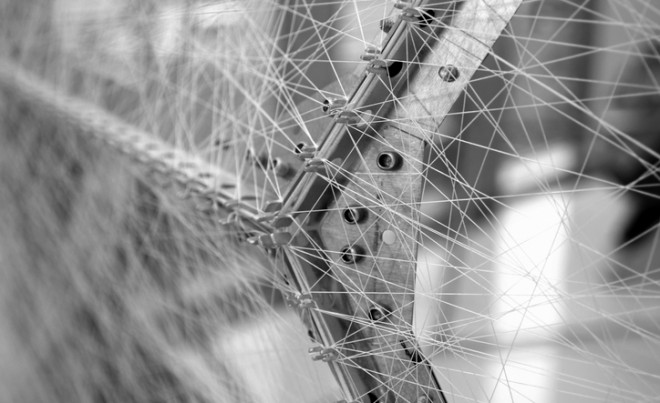
At that point, Oxman’s group adds, “A swarm of 6,500 silkworms was positioned at the bottom rim of the scaffold spinning flat non-woven silk patches as they locally reinforced the gaps across CNC-deposited silk fibres.”
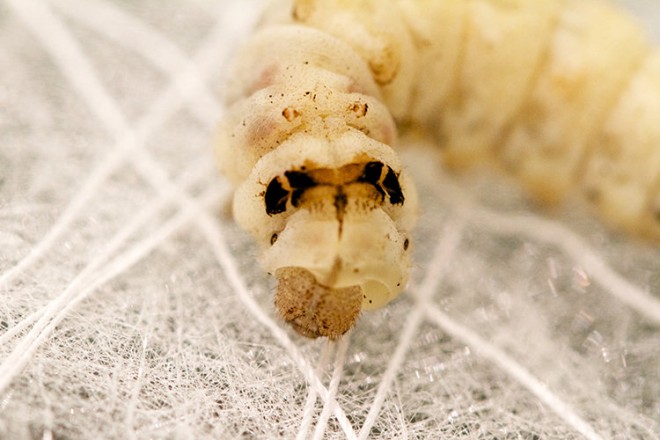
The “CNSilk” method resulted in this gossamer, woven dome that looks more like a cloud than a building.
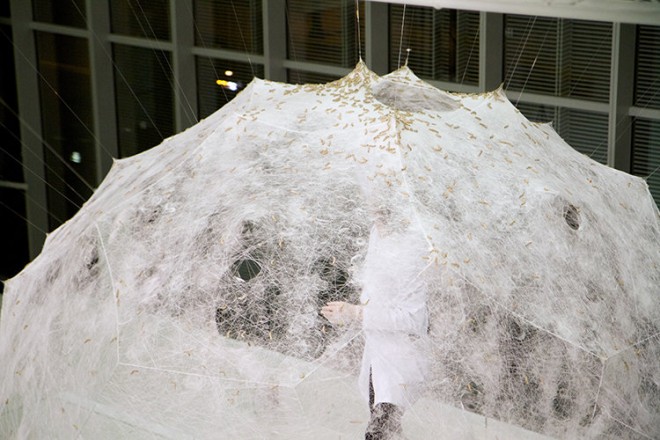
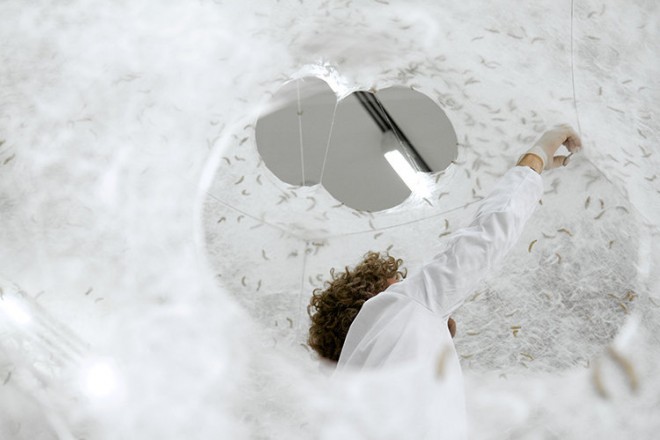
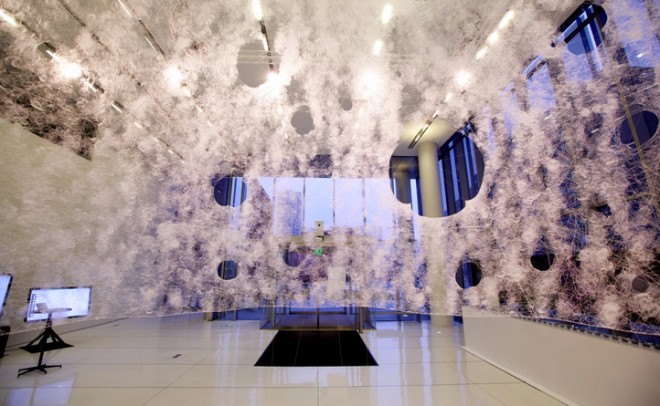
Images courtesy of MIT.
What both of these examples demonstrate, despite the fact that one is a somewhat tongue-in-cheek media ploy by an alcohol company, is that animal bodies can, in fact, be guided, disciplined, or otherwise regulated to produce large-scale structures, from objects to whole buildings.
In both cases, however, the animals are simply producing what they would normally — that is, naturally — produce: silk and honey. Things get substantially more interesting, on the other hand, when we look at slightly more exotic biological materials.
Bee Plastic
Several years ago, materials scientist Debbie Chachra at New England’s Olin College of Engineering began researching what’s known as “bee plastic”: a cellophane-like biopolymer produced by a species native to New England called Colletes inaequalis.
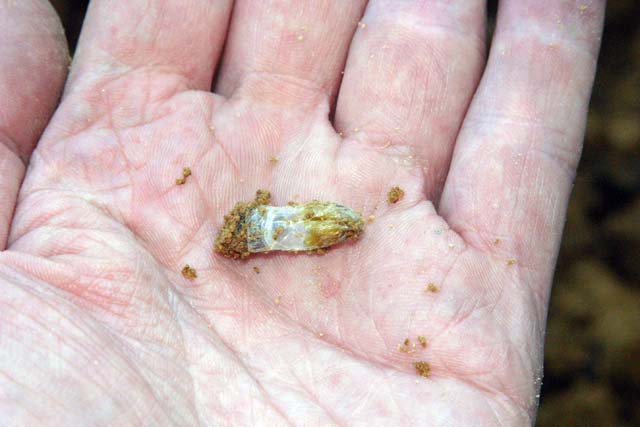
Image courtesy of Deb Chachra.
These bees create cocoon-like structures in the soil — seen in the photo, above — using a special gland unique to the species; the resulting, non-fossil-fuel-based cellophane-like polymer not only resists biodegradation, it also survives the temperate extremes of New England, from the region’s sweltering summers to its subzero winter storms.
More intriguingly, however, the bee plastic “doesn’t come from petroleum,” Chachra explained to me for a 2011 end-of-year article in Wired UK. “The bees are pretty much just eating pollen and producing this plastic,” she continued, “and we’re trying to understand how they do it.”
Bee plastic, Chachra justifiably speculates, could perhaps someday be used to manufacture everything from office supplies to car bumpers, acting as an oil-free alternative to the plastics we use today and perhaps kickstarting a homegrown bio-industry for New England, where the species thrives.
But even this, of course, is a vision of animal-based manufacturing that relies on the already-existent excretions of living creatures. Could we — putting aside for now the moral and ethical implications simply to discuss the material possibilities — perhaps genetically modify bees, silkworms, spiders, and so on to produce substantially more robust biopolymers, something not just strong enough to resist biodegrading but that could be produced and used on an industrial scale?
Not unlike Dewar’s bee-printed bottle, then, augmented cousins of Chachra’s plastic-producing bees could print whole car bodies, kitchen counters, architectural parts, and other everyday products, literally 3D-printing the world of tomorrow.
This becomes far more strange and promising, if we move to materials like concrete.
Concrete Honey
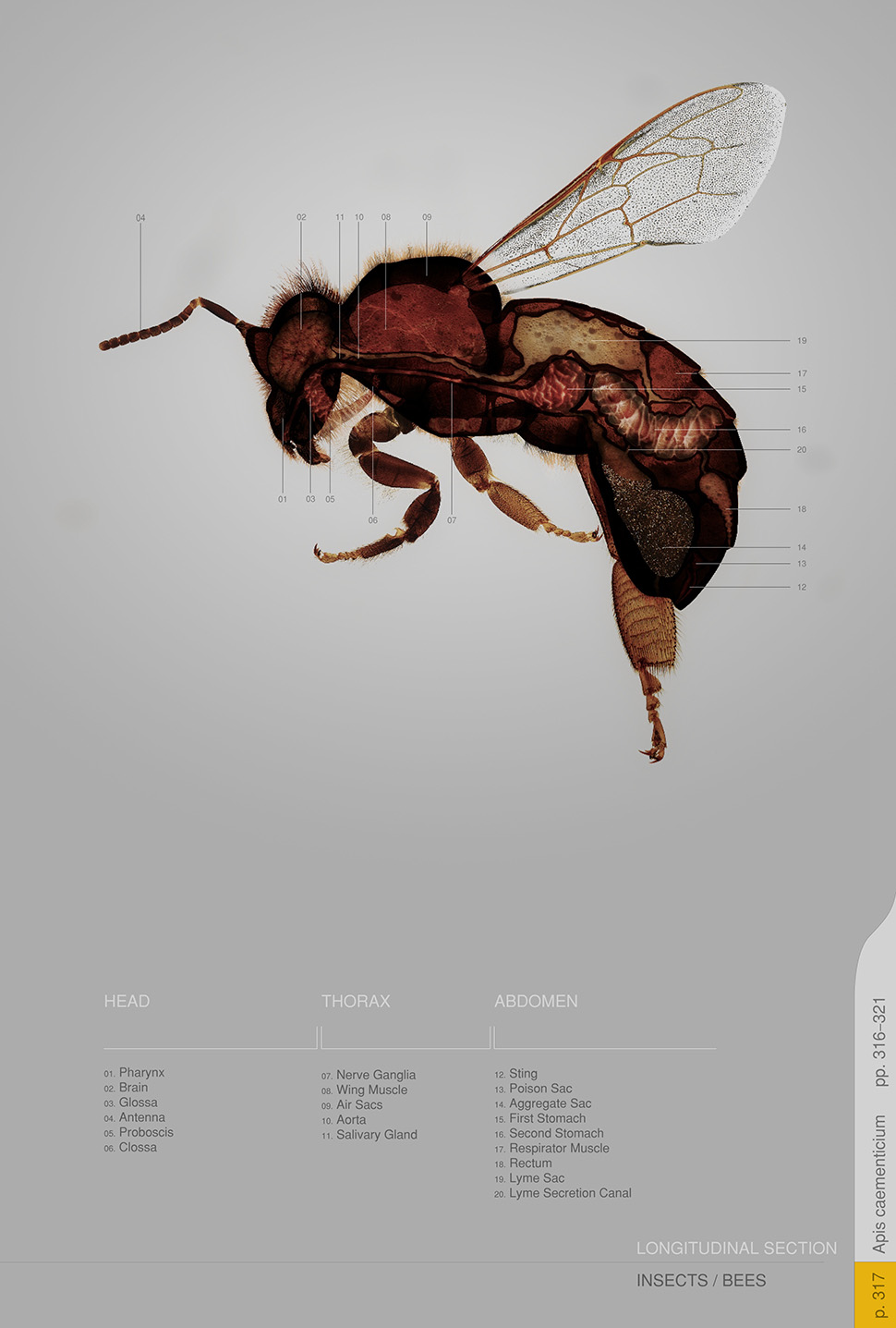
For an ongoing collaborative project, New York-based architect John Becker and I have been looking at the possibility of using bees that have been genetically modified to print concrete as architectural printheads.
Initially inspired by a somewhat willful misreading of a project published by the CCA in Montréal under the title “Bees Make Concrete Honey,” we’ve imagined and illustrated a series of science-fictional scenarios in which a new bee species, called Apis caementicium, could be deployed throughout the city to repair statues and fix architectural ornament, and even to produce whole, free-standing structures, such as cathedrals.
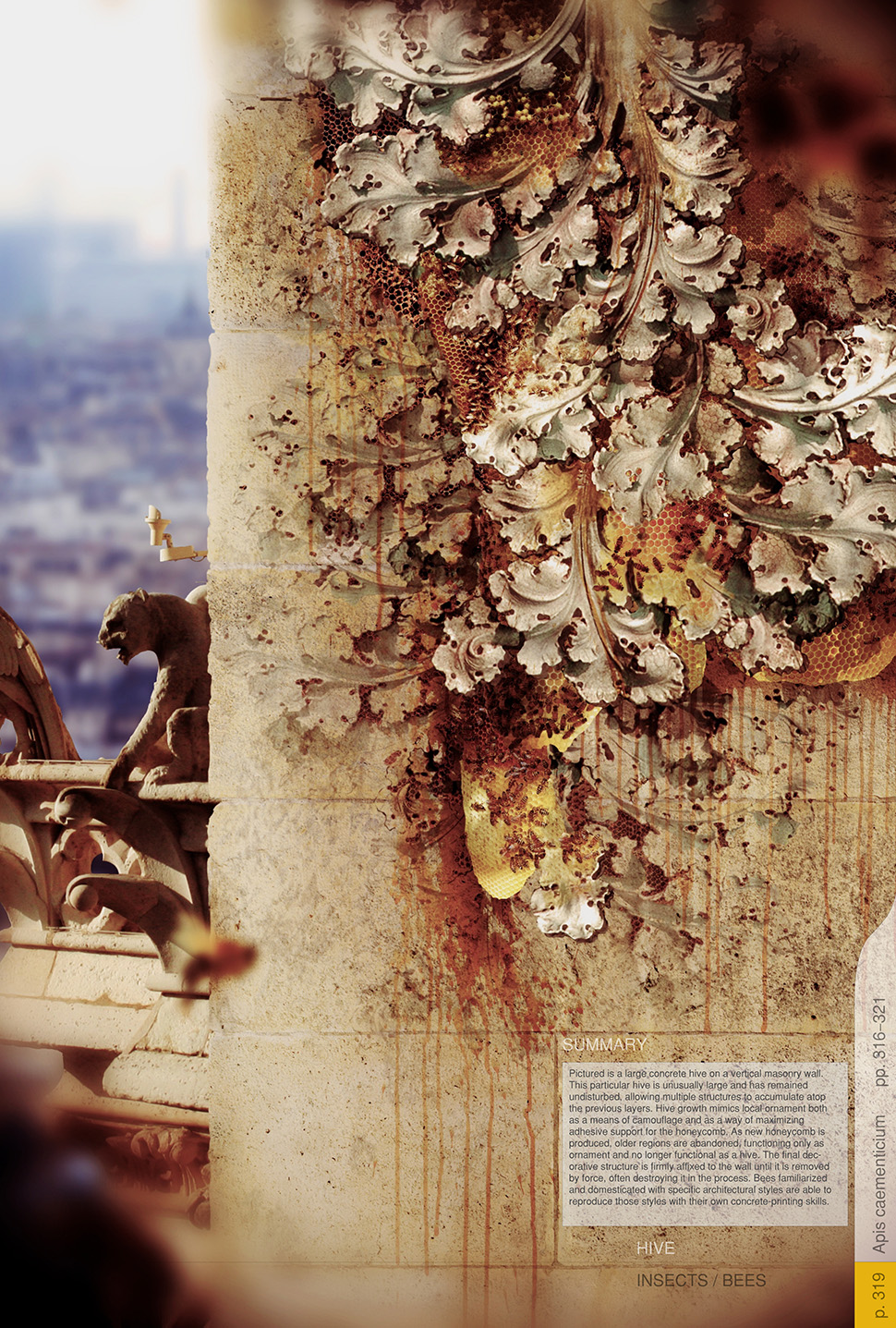
Like the process followed for the Dewar’s bottle, seen above, the bees would be given an initial form to work within. Then, buzzing away inside this mould or cost, and additively depositing the ingredients for bio-concrete on the walls, frames, or structures they’re attached to, the bees could 3D-print new architectural forms into existence.
This includes, for example, in the image below, the iconic lions outside the New York Public Library, damaged by exposure and human contact, but now fixed from within by concrete bees.
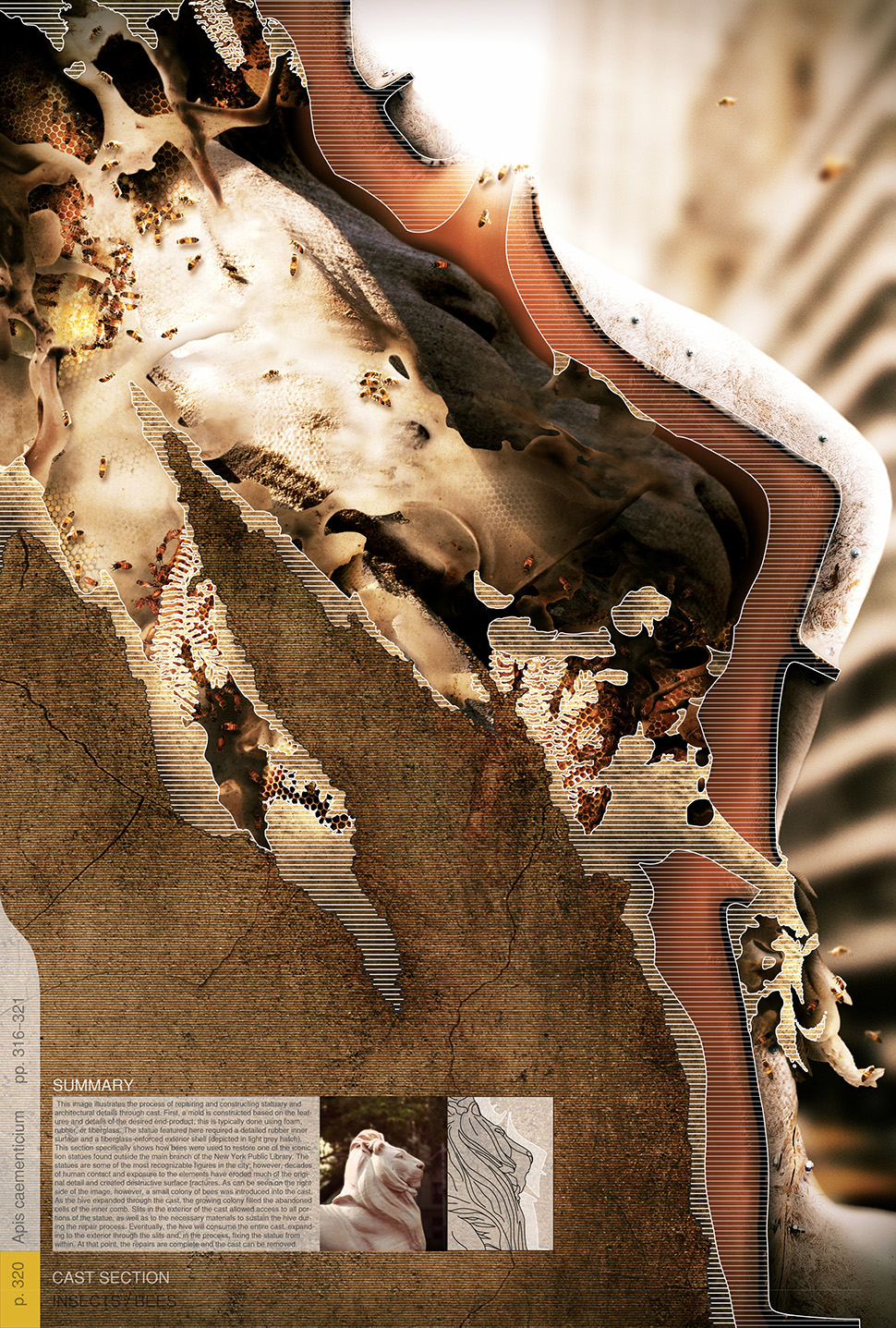
But, of course, tidy plots such as these invariably spin out of control and things don’t go as planned.
Feral Printers
The bees, of course, eventually escape, first just a few here and there, but then an upstart colony takes hold. Within a few years, as they reproduce and thrive, and as the colonies grow, the city becomes aware of the scale of the problem: rogue 3D-printing bees have infested various parts of the city.
They print where they shouldn’t print and, without the direction of carefully made formwork and molds, what they print often makes no sense.
They print on signs and phone poles; they take over parks and gardens, where they print strange forms on flowers.

Tiny fragments of concrete can be seen on plants and door frames, beneath cars and on chain-link fences, coiling up and consuming the sides of structures where they were never meant to be, like kudzu; and, of course, strange bee bodies are found now and again, little concrete-laden corpses in grass of backyards, in parking lots, and on rooftops.
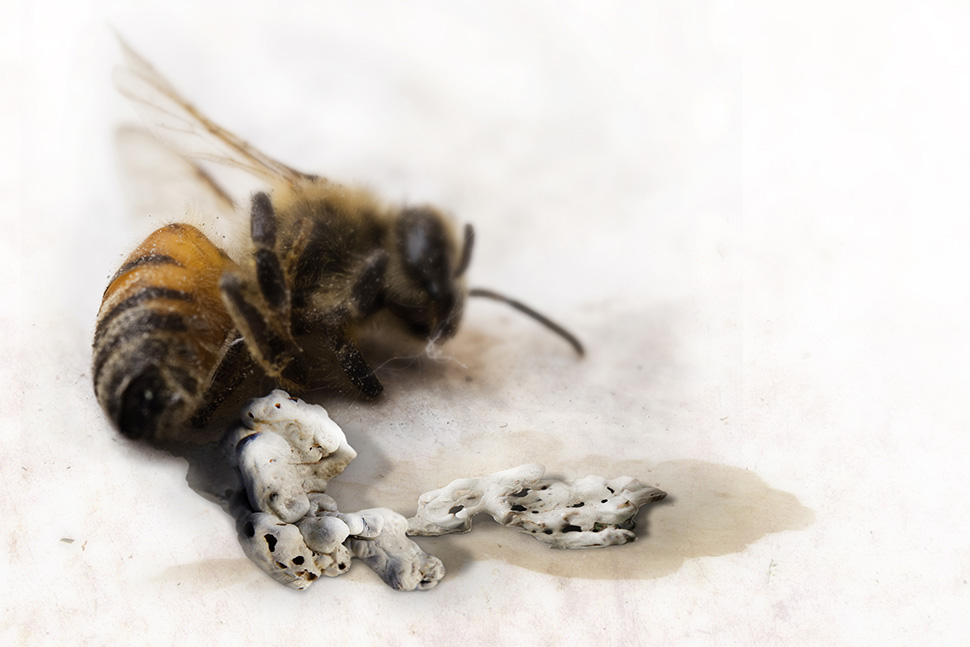
Striking creatures, augmented and extraordinary, dot the very city that they’ve also beautified and improved, where they once printed church steeples and apartment ornament, where they fixed cracked walls, statues, and sidewalks.
Of course, other, more adventurous or simply disoriented bees make their way much further, hitching inadvertent rides in the holds of ships and aeroplanes, mistakenly joining other hives then shipped around the world.
The bees are soon found in Europe, China, and, especially — for reasons never yet clear to materials scientists — India, where, in the image taken below, they can be seen adding unnecessary ornamentation to a temple in Rajasthan. Swarming and uncountable, they busily speck the outside of the building with bulbous and tumid additions no architect would ever have planned for.
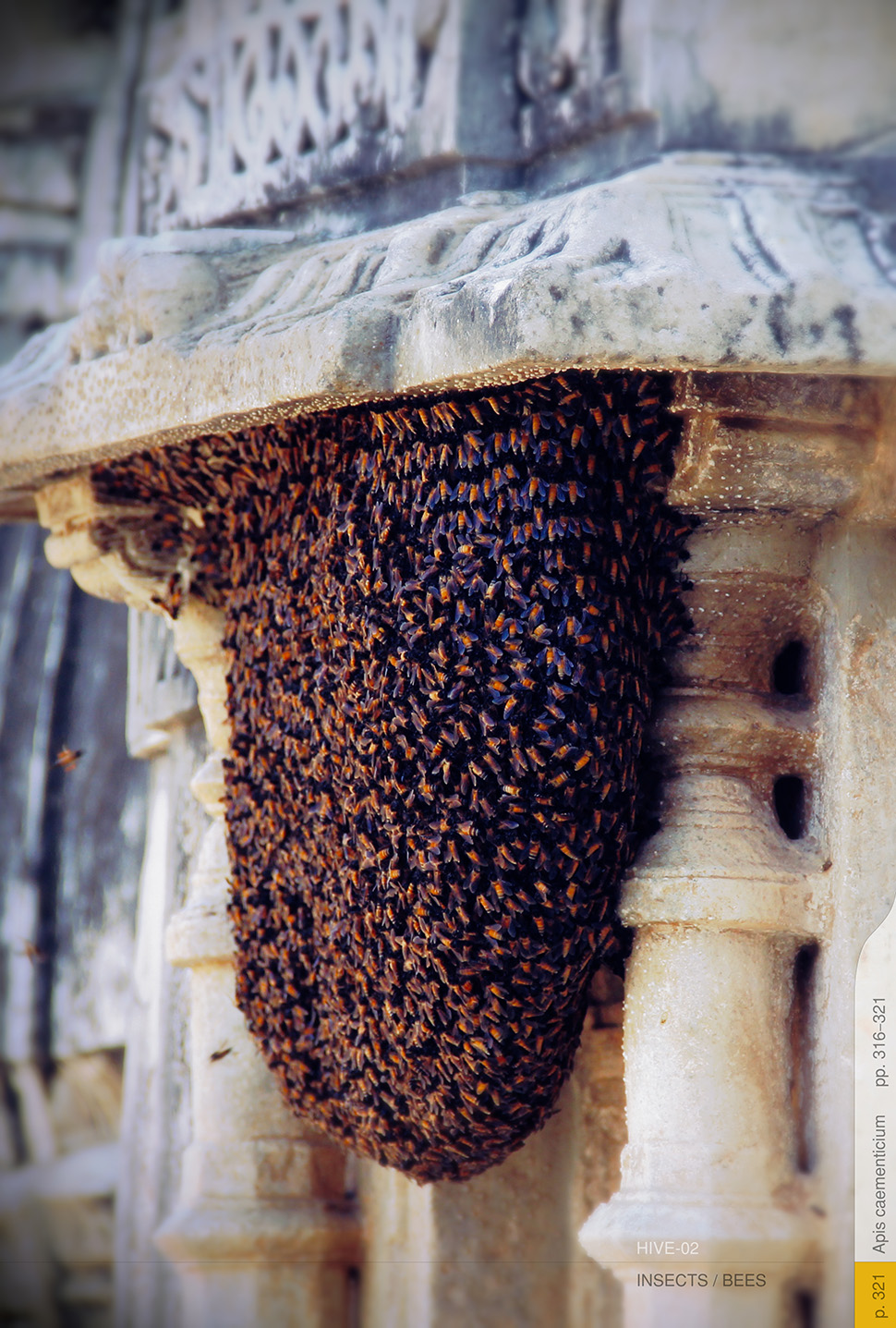
As the bees speciate yet further, and their concrete itself mutates — in some cases, so hard it can only be removed by the toughest drills and demolition equipment, other times more like a slow-drying sandstone incapable of achieving any structure at all — this experiment in animal printheads, these living 3D printers producing architecture and industrial objects, comes to end.
A Bee Amidst The Machines
Designers learn from the, in retrospect, obvious mistakes that led to these feral printers, turning back to their more easily controlled inorganic factories and industrial processes. But, even then, on quiet spring days, there can still be a tiny buzzing sound that comes from the machine, and whole assembly lines come shuddering to a halt. Inside, just doing what it’s used to — what we made it do — a tiny 3D-printing bee has taken root, leaving errant clumps of concrete wherever it alights.
All images not otherwise credited are by John Becker.
